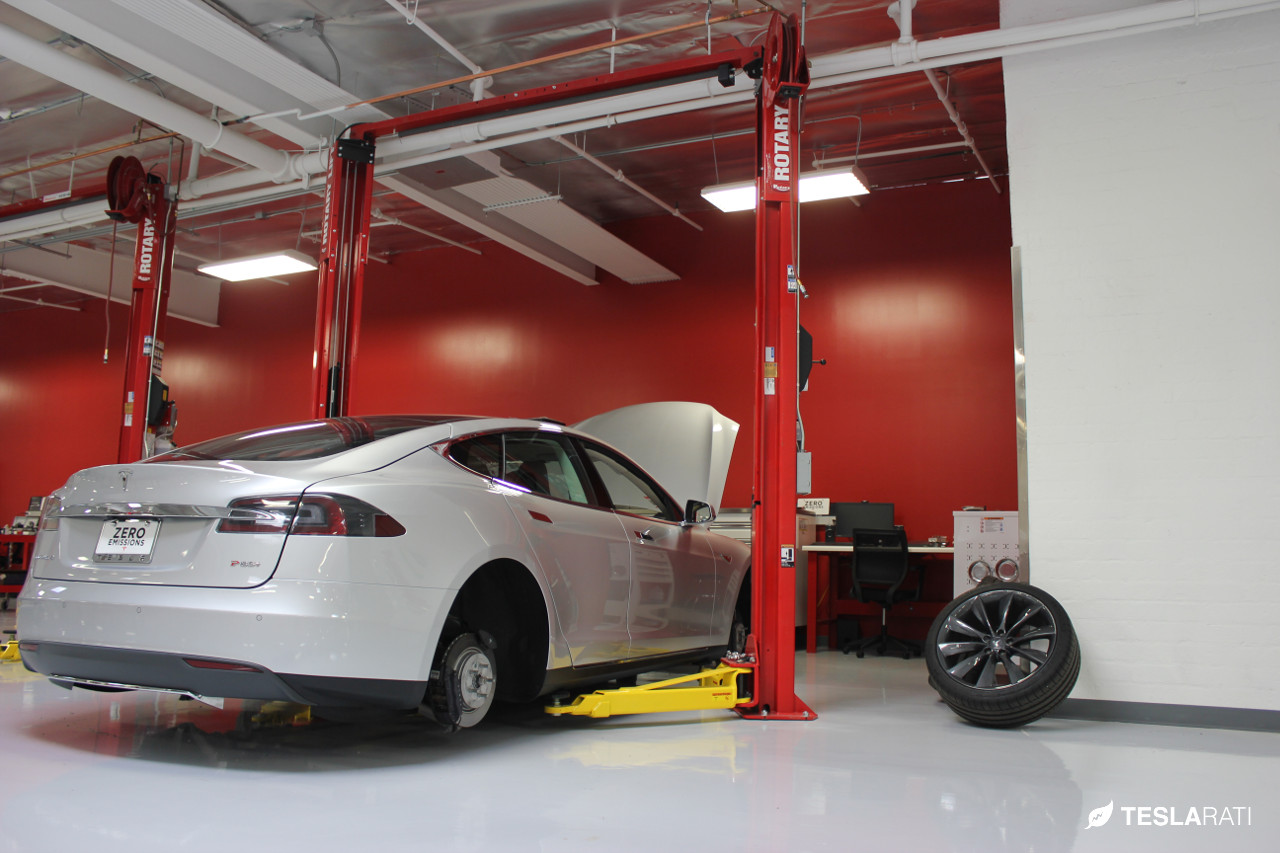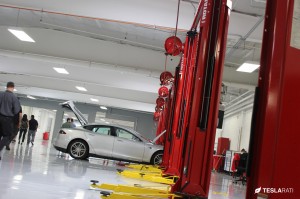Lifestyle
Should you buy the Tesla Pre-Paid Service Plan?

After counting down the days until the much anticipated delivery of your Tesla Model S another timer begins – counting down 60 days from the time of delivery until the Tesla pre-paid service plan offer expires.
Tesla Service Plan Choices
MyTesla portal on Teslamotors.com outlines various service plan offerings under the section titled “MODEL S SERVICE SIGN UP.” A standard annual service from Tesla Motors (not pre-paid) is $600 when paying per visit or one can opt to purchase a pre-paid service plan as follows:
- 4 year plan – Tesla Service for four years/Up to 50,000 miles. Cost: $1,900. This represents a 21% effective discount from the base price.
- 4 year plan + 4 year extension – Tesla Service for eight years/up to 100,000 miles. Cost: $3,800. This too represents a 21% discount from the base price.
Both plans plans include an annual inspection or an inspection every 12,500 miles. Despite having a service plan option, Tesla still makes a bold statement stating that warranty is not impacted even if you chose to never bring your Model in for service.
Tesla Service Plan Value
 Although you’re receiving a 21% discount by pre-paying, that doesn’t take into account the opportunity cost with shelling out the money in advance. Let’s first look at the basic 4 year pre-paid service plan and assume you can earn a relatively risk-free 5% gain on an investment. Pre-paying $1,900 is effectively $2,309 in future value 4 years from now. Paying $600 per year starting a year from now for 4 years adds up to $2,586 in future value. So, accounting for the time value of money, the pre-paid plan is about 11% less expensive given the assumptions above.
Although you’re receiving a 21% discount by pre-paying, that doesn’t take into account the opportunity cost with shelling out the money in advance. Let’s first look at the basic 4 year pre-paid service plan and assume you can earn a relatively risk-free 5% gain on an investment. Pre-paying $1,900 is effectively $2,309 in future value 4 years from now. Paying $600 per year starting a year from now for 4 years adds up to $2,586 in future value. So, accounting for the time value of money, the pre-paid plan is about 11% less expensive given the assumptions above.
Following the same model on an 8 year pre-paid service plan we get a much different picture. A $3,800 pre-pay has a $5,614 future value assuming a 5% annual rate of return. Forgoing the pre-pay option and paying $600 per year as-you-go, has a future value of $5,729 which means you’re only saving 2% with the pre-pay plan.
Also see: Tesla Model S Service Plan – Is it Worth it?
Naturally these results will vary based on the rate of return of your investment and inflation rate at the time. In times of high inflation the pre-pay option is much more attractive. But if you can get a 10% return on your investment (buy TSLA stock!) the pre-pay option is less attractive.
Mileage Adjustment
Tesla service plans are based on an annual mileage of 12,500 miles. At my current rate of driving, I’ll likely reach 32,000 miles within a year which means that my 4 year plan is more like a 2.5 year plan and the 8 year plan is more like a 5 year plan, assuming I need to pay a visit every 12.5k miles. The shorter plans reduces my opportunity cost thus increasing the value of the pre-pay service plan.
For example, if I plan on driving 100K miles in my Model S and purchase the pre-paid service plan, I’m going to pre-pay $3,800 for the 100K miles worth of services which I must perform every 12,500 miles or so. If I pay as I go and pay $600 every 25,000 miles its going to cost me $2,400. Not even considering the time value of money, paying as you go is a clear winner for high mileage drivers.
Poll Results
Nearly 60% of owners are pre-purchasing service plans. Reading through forum threads it seems that owners are doing this:
- Buy shortest term pre-paid service contract
- Decide later on extending that for a longer term (it’s not obvious but if you pre-purchase only the 4 year plan and later want to extend that to the 8 year plan, you could.)
- Waiting until 30 days before standard warranty expiration (4 years/50K miles) before deciding/buying extended warranty.
Summary
The 4-year pre-paid service plan, for Model S owners that have annual mileages at or under the 12,500 miles per year, works out to be an approximate 10% savings.
So,what course of action did I take when selecting a Tesla pre-pay service plan, knowing that I will nearly triple the assumed 12,500 annual mileage? The answer, thanks to Tesla service’s recommendation, is nothing. I did nothing.

Lifestyle
Tesla Model S Plaid battles China’s 1500 hp monster Nurburgring monster, with surprising results
There is just something about Tesla’s tuning and refinement that makes raw specs seem not as game-changing.

The Tesla Model S Plaid has been around for some time. Today, it is no longer the world’s quickest four-door electric sedan, nor is it the most powerful. As per a recent video from motoring YouTube channel Carwow, however, it seems like the Model S Plaid is still more than a match for some of its newer and more powerful rivals.
The monster from China
The Xiaomi SU7 Ultra is nothing short of a monster. Just like the Model S Plaid, it features three motors. It also has 1,548 hp and 1,770 Nm of torque. It’s All Wheel Drive and weighs a hefty 2,360 kg. The vehicle, which costs just about the equivalent of £55,000, has been recorded setting an insane 7:04.957 at the Nurburgring, surpassing the previous record held by the Porsche Taycan Turbo GT.
For all intents and purposes, the Model S Plaid looked outgunned in Carwow’s test. The Model S Plaid is no slouch with its three motors that produce 1,020 hp and 1,420 Nm of torque. It’s also a bit lighter at 2,190 kg despite its larger size. However, as the Carwow host pointed out, the Model S Plaid holds a 7:25.231 record in the Nurburgring. Compared to the Xiaomi SU7 Ultra’s record, the Model S Plaid’s lap time is notably slower.
Real-world tests
As could be seen in Carwow’s drag races, however, Tesla’s tech wizardry with the Model S Plaid is still hard to beat. The two vehicles competed in nine races, and the older Model S Plaid actually beat its newer, more powerful counterpart from China several times. At one point in the race, the Xiaomi SU7 Ultra hit its power limit due to its battery’s temperature, but the Model S Plaid was still going strong.
The Model S Plaid was first teased five years ago, in September 2020 during Tesla’s Battery Day. Since then, cars like the Lucid Air Sapphire and the Xiaomi SU7 Ultra have been released, surpassing its specs. But just like the Model Y ended up being the better all-rounder compared to the BYD Sealion 7 and the MG IM6, there is just something about Tesla’s tuning and refinement that makes raw specs seem not as game-changing.
Check out Carwow’s Model S Plaid vs Xiaomi SU7 drag race video below.
Lifestyle
500-mile test proves why Tesla Model Y still humiliates rivals in Europe
On paper, the BYD Sealion 7 and MG IM6 promised standout capabilities against the Model Y.

BYD is seeing a lot of momentum in Europe, so much so that mainstream media has taken every opportunity to argue that the Chinese automaker has beaten Tesla in the region. But while BYD sales this year in Europe are rising and Tesla’s registrations remain challenged, the raw capabilities of vehicles like the Model Y are difficult to deny.
This was highlighted in a 500-mile challenge by What Car? magazine, which showed that the new Tesla Model Y is more efficient, cheaper to run, and more reliable than rivals like the BYD Sealion 7, and even the nearly 400 KW-charging MG IM6.
Range and charging promises
On paper, the BYD Sealion 7 and MG IM6 promised standout capabilities against the Model Y. The Sealion 7 had more estimated range and the IM6 promised significantly faster charging. When faced with real-world conditions, however, it was still the Model Y that proved superior.
During the 500-mile test, the BYD nearly failed to reach a charging stop, arriving with less range than its display projected, as noted in a CarUp report. MG fared better, but its charging speeds never reached its promised nearly-400 kW charging speed. Tesla’s Model Y, by comparison, managed energy calculations precisely and arrived at each stop without issue.
Tesla leads in areas that matter
Charging times from 25% to 80% showed that the MG was the fastest at 17 minutes, while Tesla and BYD were close at 28 and 29 minutes, respectively. Overall efficiency and cost told a different story, however. The Model Y consumed 19.4 kWh per 100 km, compared to 22.2 for MG and 23.9 for BYD. Over the full trip, Tesla’s charging costs totaled just £82 thanks to its supercharger network, far below BYD’s £130 and MG’s £119.
What Car? Magazine’s testers concluded that despite BYD’s rapid sales growth and the MG IM6’s seriously impressive charging speeds, Tesla remains the more compelling real-world choice. The Model Y just offers stability, efficiency, and a proven charging infrastructure through its Supercharging network. And as per the magazine’s hosts, the Model Y is even the cheapest car to own among the three that were tested.
Watch What Car? Magazine’s 500-mile test in the video below.
Lifestyle
Tesla Cybertruck slapped with world’s least intimidating ticket, and it’s pure cringe
One cannot help but cringe and feel second-hand embarrassment at the idea of a person just driving around with a stack of these babies.

A Cybertruck parked at Stanford Shopping Center in California was recently hit with what might be the most try-hard piece of paper ever slipped under a wiper blade: a “fake citation” accusing the driver of supporting a “fascist car.”
The note, shared on X by Tesla staff program manager Ryan Torres, quickly made the rounds on X, where it quickly gained attention as an example of how not to protest.
The world’s least intimidating ticket
According to the citation, the supposed “violation” was “driving a fascist car.” The remedial action? Take the bus, call an Uber, or ride a bike. The note also dubbed Elon Musk a “chainsaw-wielding Nazi billionaire.” Now, protests against Tesla and Elon Musk have become commonplace this year, but one cannot help but cringe and feel second-hand embarrassment at the idea of a person just driving around with a stack of fake anti-Tesla/Musk citations.
Torres pointed out the irony himself in his post on X. Tesla currently employs over 140,000 Americans, and SpaceX has put the U.S. firmly back at the top of space technology. As Torres put it, maybe the person behind the world’s least intimidating ticket should “read a book on innovation before vandalizing” other people’s property.
Peak performative clownery
Not to mention that the fake ticket’s logic collapses under its own weight. EVs like the Cybertruck are literally designed to reduce emissions, not “destroy the economy.” If anything, Tesla has bolstered the United States’ economy by fueling jobs in engineering, manufacturing, and clean energy. It’s not the first time a Tesla has been the target of vandalism or politically charged notes, but this one stands out for sheer cringe value.
Torres summed it up neatly: “Peak clownery.” On that point, at least, the citation earns full marks. In a way, though, perhaps cringe fake tickets are not as bad as the literal firebombs that were being thrown at Tesla stores and cars earlier this year because some critics were gleefully misinformed about Elon Musk.










